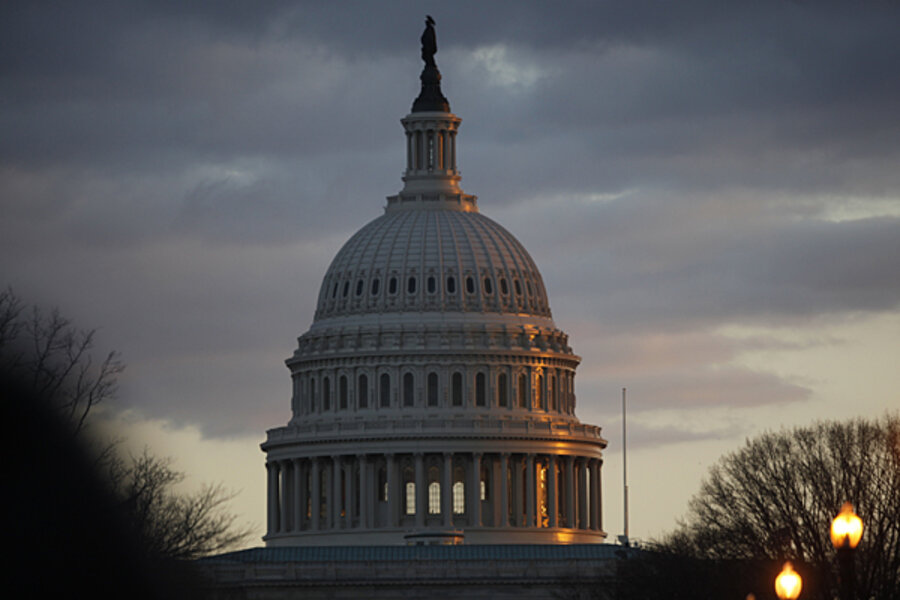Why the Senate budget's tax cuts do not add up
Loading...
The Senate Democrats’ budget, like the House version, rips unfair and inefficient tax preferences that litter the revenue code. But the tax provisions of the Senate budget, which is being debated on the floor today, raise at least two big problems: They see flaws in only in those tax expenditures that benefit high-income households and big businesses. And while the fiscal plan promises to raise taxes on big business and the rich by $975 billion over 10 years, it tells us almost nothing about how.
There is a reason for that lack of detail: Raising nearly $1 trillion by eliminating tax preferences for some businesses and a tiny slice of households is very hard to do. Not impossible, perhaps, but very hard.
The Budget panel’s 345-page committee report describes its revenue aims in exactly six paragraphs (pg. 138 if you are following at home). In sum:
“Eliminating loopholes and cutting unfair and inefficient spending in the tax code for the wealthiest Americans and biggest corporations must be a significant element of a balanced and responsible deficit reduction plan….It is the clear intent of the Committee…that the savings found by eliminating loopholes and cutting unfair and inefficient spending in the tax code not increase tax burdens on middle-class families or the most vulnerable Americans.”
The summary of the budget identifies only three examples of how to raise revenue. Two of them, eliminating the ever-popular special depreciation rules for corporate jets and the carried interest tax treatment of compensation for hedge fund managers might raise a total of $20 billion over 10 years, according to the congressional Joint Tax Committee. Best case, that would leave the Senate about 98 percent short of its revenue goal, and I’m skeptical that taxing carried interest as ordinary income would raise much at all once the funds figure out ways to restructure their deals.
The third proposal would somehow change the tax treatment of offshore enterprises of multinational companies. But there are infinite ways to tackle international tax and it is impossible to know how much the Senate really could raise. JCT figured Obama’s most recent international package would produce about $170 billion over a decade, but that plan has no chance of ever passing Congress.
The Senate budget would also cut taxes a bit by extending relatively generous rules for refundable credits such as the earned income and child tax credit. But those tax cuts are so limited and the offsetting tax hikes so ill-defined that the Tax Policy Center can’t yet model the Senate plan.
However, it is possible to put the Senate revenue goal in some context.
Let’s start by figuring out who we are talking about. The Senate budget never says what it means by the wealthiest Americans, but let’s define them as the top 5 percent, who make about $227,000 and up.
Here are some rough numbers from a paper my TPC colleagues Eric Toder and Dan Baneman wrote last year:
In 2011, individual tax expenditures totaled about $1 trillion. The top 5 percent got $439 billion of that. So, yes, when you look at 10 years of tax preferences, the math says it would be possible to get $975 billion from high-income households over a decade.
That’s the math. Now the reality.
The top 5 percent got about $190 billion from exclusions from taxable income. The rich especially benefit from two of the biggest: capital gains realized at death and investment earnings of retirement accounts. I may have missed it, but I haven’t heard many Democrats talk about ditching either of these. The biggest exclusion of all, for employer-sponsored health insurance, mostly benefits middle-income people, not the rich.
The top 5 percent got another $69 billion from low rates on investment income in 2011. But Congress has already raised rates on capital gains and dividends since the TPC estimate, reducing the value of the preference. And investors will respond to new rate hikes by realizing fewer gains, further reducing the amount of revenue Treasury would collect.
That leaves deductions. Congress could go after those that most benefit high-income households–state and local taxes and charitable gifts. Lawmakers could also cap others, such as the deduction for home mortgage interest, for the top 5 percent. I await that plan with great interest.
President Obama proposed a different way to raise taxes—by limiting the value of all itemized deductions and some other preferences to 28 percent. That would raise about half of what the Senate needs– about $520 billion, according to the JCT’s estimate of Obama’s 2013 budget. Under current law, however, Treasury would collect less.
That leaves the possibility of getting the money by raising other business taxes. But Obama and even many Senate Democrats prefer to use that revenue to reduce corporate rates.
Note that these numbers were all based on the law prior to this year’s American Tax Relief Act, and they’ll all change quite a bit. But they give you a good ballpark estimate of just how hard it would be for the Senate Finance panel to come up with $975 billion from a handful of households and businesses.







